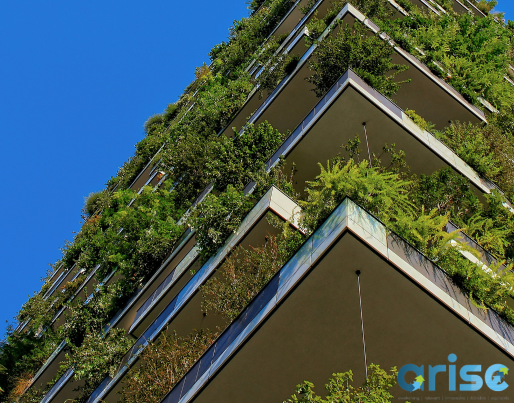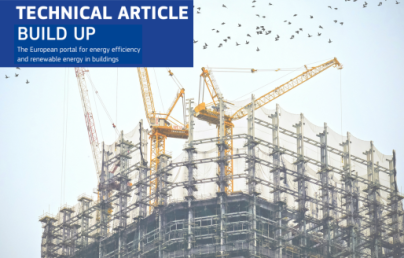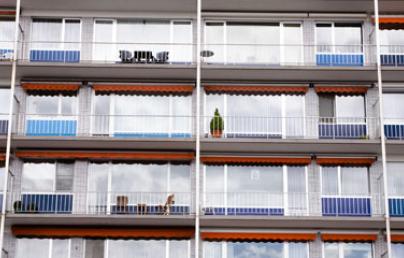Making Sustainability part of the Design Procurement

Making Sustainability part of the Design Procurement
Authors
James Harty, Lecturer at KEA, Email address.
James Harty is a lecturer at KEA, Copenhagen School of Design & Technology. His PhD researched “The Impact of Digitalisation on the Management Role of Architectural Technology”, (OpenAir RGU). James was instrumental in the schools’ adoption of BIM in 2006, with the implementation of collaborative methodologies and in dealing with disruptive technologies. He has co-authored a book about this, “Getting to Grips with BIM”, Routledge 2016. He sees BIM as instrumental in tackling climate change, sustainability, especially embodied carbon, and performance-based design. His Masters in Urbanism mapped the housing types and urban morphology of a satellite town near Dublin, Dun Laoghaire, and he was a co-author of a report preserving Temple Bar in Dublin.
Eduardo Rebelo, Lecturer at Belfast Met, Email address
Andrew Hamilton, Lecturer at Belfast Met, Email address
(Note: opinions in the articles are of the authors only and do not necessarily reflect the opinion of the EU).
Introduction
As a realtor in the Netherlands, Coen van Oostrom wanted to develop the world’s most sustainable building, according to the BREEAM rating method (van Oostrom 2016)[1]. BREEAM measures sustainable value in a series of categories, ranging from: energy, health and wellbeing, innovation, land use, materials, management, pollution, transport, waste, and water (BREEAM 2019)[2]. Oostrom stated there was already a building in London which achieved a 96% rating.
The client was a well-known firm (Deloitte) and the building, called The Edge, is situated in Amsterdam. It has over 32,000 sensors measuring occupancy, lighting, temperature, and air quality, and is connected to users via a smartphone app. This meant that they could reduce 4,000 workspaces to 2,000, based on employees’ schedules, ranging from sitting-desk, standing-desk, work-booth, meeting-room, balcony-seat, or concentration-room. It also recognises their preference for light and temperature, and it tweaks the environment accordingly (Philips 2019)[3].
This is indicative of the current state of play and what needs to be addressed and shows what needs to happen quickly if the climate crisis is to be tackled. As well as the methods highlighted being necessary, the correct mind-set also needs to be developed.
Lack of Awareness
A student of mine recently wrote that “…individual barriers, such as a lack of knowledge, skills, and resources, can further hinder the effective implementation of sustainable values in the (AEC) workplace.” (Brown 2023)[4]. Brown identifies a lack of awareness, short-term focus, lack of incentives, pre-approved solutions, outdated industry values and ideologies and ultimately cost concerns.
Similarly, given that projects are driven by contracts, and these tend to involve different interests, goals and values, there are opportunities for conflict. This can result in human error, or even corruption or collusion (Montague 2023)[5].
“For the last two decades, the (construction) sector has tried to apply the collaborative mantra. But at the end of the day, when the chips are down, it is the contract that shapes behaviours and outcomes”. (Kinnaird, Geipel 2017)[6].
According to Arup the solution requires openness, transparency, honesty, and immutability and blockchain offers permanent, secure, and valuable transaction methodologies. Don Tapscott sees the difference as stark as that of the Internet of information, compared to the Internet of value (Tapscott 2016)[7]. Arup goes on to describe a Blockchain of circular BIM things, this is a live building information model, described as one “…whose components could continuously be fed usage data from real buildings throughout their operation" (Kinnaird, Geipel 2017)[6].
Using Levels of Development (LODs), this is akin to going from LOD-300 to LOD-400 to LOD-500 and/or even LOD-350 in between (BIM-FORUM 2017)[8] LOD-300 is the level of development that broadly defines the designers’ requirements, while 350 is the contractors’ take on the designer’s requirements and 400 is what is ordered to be built, while 500 is the ‘as-built’ completed project.
Arguably, there should be no changes through these stages, but this is clearly not the case, as can be seen most glaringly in a project like Grenfell Towers in London (Moore-Bick 2019)[9] where the project went through too many iterations from the architect’s intentions to the completed refurbishment, resulting in disaster. New replacement windows were installed 150mm from the position of the original windows. These gaps were not properly filled out, being filled with PIR (polyisocyanurate, which is combustible) allowing the fire unabated access to all areas (Barratt 2018)[10] but was mistakenly accredited as being fireproof.
Having a ledger to document this process, and having it decentralised makes it transparent. But it does not end there, having methods to monitor the use of the building and sensors to report this data back to a database means that algorithms can process this information and establish if the building is delivering what was claimed at the design phase, i.e., accountability is introduced to the contractual obligations, which was not there before.
Being able to measure these savings (should they accrue) in energy use, embedded carbon and optimal occupancy, allows for them to be documented and a method of rewarding such endeavours becomes real. A corollary of this is that once this is realised, then the actors in the design team and construction team, will find ways to improve this new vertical source of income, becoming better at buildability, sustainability with better performing building stock. Thus, they become incentivised (Harty 2022)[11].
David Cumming wrote an article on why asset managers cannot be passive on climate change and said that “the obvious template for solutions is the 2015 Paris Agreement, which seeks to limit the increase in global temperature this century to well below two degrees Celsius above pre-industrial levels, and to pursue efforts to limit the increase even further to 1.5 degrees Celsius. Investors should recognise we are nowhere near these levels currently: the FTSE 100, for example, is on course to burn the planet at 3.9 degrees Celsius” (Cumming 2020)[12].
He sought a solution that is responsive, substantive, authentic, informed, and impactful. To do this means putting pressure on companies and governments to enact policies to deliver these objectives and concluded that “Climate change has changed everything. Investment objectives now have to include responsible values and actions, in addition to financial returns. We have to respond by engaging in a different way and by taking decisive action when the companies we invest in don’t. We cannot be passive in the face of climate change. We have to be active” (Cumming 2020)[12].
New Danish Building Regulations (§ 297 & § 298)
From the start of 2023, Denmark is developing new Building Regulations (BR23). Possibly the most contentious part of the regulation is making it mandatory for all newly constructed (heated) buildings to perform a Life-Cycle Assessment (LCA) calculation. Essentially, it will introduce a threshold value of 12kgCO2e/m2/PA, for all new buildings of 1000m2, with further reductions to be defined in alternative-years up until 2030. Currently it is around 15-20, but it will decrease in intervals from 8, to 7 in 2025, 6 in 2027 and 5kgCO2e/m2/PA in 2029 (Espersen, Vind et al. 2022)[13].
As a starting point, 12kgCO2e/m2/PA is not an ambitious target at all, but rather is seen as a starting point to adopt this onerous new methodology. A survey of 60 new buildings in Aarhus, Denmark found that under existing current procurement methods a fraction were 12 or over. Most were closer to the lower targets planned for rolling out in the next few years. More radically, the LCA targets will be declared at the concept design stage. This means there is a legal requirement to deliver the targets at planning permission stages and in execution.
What is new here is that there is a requirement to declare targets at the outset and to maintain and deliver them through the design and construction process. This was not a requirement before, and the intention is to make sustainability in procurement an active vehicle to drive the buildings’ finished credentials. Previously, the LCA part was only addressed after the model had been made, meaning its viability was only measured afterwards. This in effect means it is a retro-active and independent process, out of sync with the design intent.
This means that an LOD-100 generic wall, at concept stage, will be given a value to which all the stakeholders will commit to deliver at completion. Furthermore, it will have impact throughout the building’s life-cycle, as intended, after it enters commission. It means that materials, methods, and construction are given an extra opportunity to impact the design and construction.
A doubt exists with this legislation because the impact of such an endeavour has not been fully assessed by lawmakers because life-cycle assessments have only been carried out on relatively few buildings, which at present does not determine the limits which will become mandatory for all construction in the future. It is also intended to extend this requirement to buildings over 1,000m2 in 2026, while encouraging Low Emission Classes throughout, which will be voluntary for ambitious clients.
Critical in these deliverables are competences and compliance, who will implement them, and the skill-sets needed by those actors. Three areas are identified, the design team (probably the architect at LOD-300), the supply chain (probably the materials merchant at LOD-400) and the contractor/subcontractor (who will build it at LOD-500). Large firms have assessed it will add roughly 50 man-hours per project, so with 200 – 300 projects a year, this equates to c. 12500 person-hours a year.
For the design team the biggest issue is a real-time assessment, for example how to rate the carbon footprint and thermal performance at concept stage. Currently most LCA’s happen after the model is finished, meaning it happens retrospectively. EPD’s also have their own problems, crossing global boundaries with language/cultural barriers, complicated bureaucracies, differing regulations and quantity declarations. The ability to produce as-built documentation is both expensive and often discouraged, meaning it rarely takes place.
Supply-Chain-Merchants are beginning to look at Extended Producer Declarations (EPDs). These are short tags which tell verified data about the material, source, performance, impact etc., If the design teams’ LOD-300 does not match the 400 or the as-built 500 then a paper-chain emerges needing to be completed and compliant, by each stakeholder, and this could be very onerous (Hammer 2022)[14]. How many EPDs should be assessed per material? Is there a filtration to help the process, and if so, how?
Does the designer or buyer read ten or two thousand EPDs to arrive at one solution? The design process evolves through the process, so what happens when something changes. For example, a generic external marble cladding becomes travertine at the end of the project stage. Is it prohibitive or is there back-tracking to validate the new material. The same applies at each stage of the process, can the supplier change a material out and what if the contractor/subcontractor uses another method. How is the paper trial covered, and how much red-tape is entering the fray.
An automated control will help this process immensely in all sectors, whether it is an add-on in modelling software, on cloud-based databases and in the verification process, will it operate on a national basis or as it should be international basis and if so by whom? Blockchain will immensely exacerbate this issue.
Extended Producer Declarations
The data about lifespan and emissions should be forthcoming from the manufacturers using Extended Producer Declarations (EPDs). Whether these are pdf’s (readable texts, barcodes or QR codes), whether they are in a database, how it is filtered and how decisions are made is still somewhat a blur. The data will be available and usable in retro-based compliance, but starting from scratch it is a daunting task.
An efficient climate action strategy is to track, allocate and measure the carbon emissions with accuracy. There are differing types of emission, classified as Scope 1, 2 and 3. In 1997 the Kyoto Protocol happened, where binding targets and measures for combating climate change were made. It was based on the Green-House Gas Protocol. GHG’s allow us to measure and manage gas emissions from private and public-sector operations, value-chains, and mitigation actions (ClimatePartner 2022)[15].
A new numeric also arises out of this called the Global Warming Potential over 100 years (GWP). It has an interesting impact where carbon dioxide lasts several thousand years and equates as one, methane is 11.8 years indexing to 27.9 while nitrous oxide is 109 years equating to 273. This means that carbon dioxide stays in the in the atmosphere for thousands of years, while methane is 12 years and nitrous oxide stays around for about 109 years.
The three scopes are described to assess a user’s carbon footprint where Scope 1 covers direct emissions, Scope 2 is indirect emissions, and Scope 3 is indirect value chain emissions:
- Scope 1: Covers direct emissions principally from transport and the physical facility. This includes direct emissions owned or controlled by the user.
- Scope 2: Covers the energy, (heating, cooling), and electricity purchased for the facility. These include GHG’s emissions from purchased or acquired energy whether generated off-site or consumed by the user.
- Scope 3: Covers a wider set of topics: including (upstream) capital goods, travel, waste in operation, commuting, energy related activities, distribution of bought goods and services, investments, franchises, (downstream) transportation, leased assets, processing and end-of -life treatments. These emissions are a result of activities not owned or controlled by the user but have an impact on the user.
Life-Cycle Assessment
Life-cycle assessment is currently a passive method to predict a building’s performance across its life, usually assumed to be over 50 years. It is passive because it does not include the building’s usage or report upon its active performance, for example, what its actual energy bill is, its occupancy rate or its robustness across its life. LCA is a part of many environmental certifications (LEED, BREEAM or DGNB) and usually attracts a hefty procurement fee and a lot of paperwork.
LCA goes through, first of all, the production phase, including the mining of raw materials, its transport and its material production/assembly. Next is the construction process, including transport and assembly from source to site. Third is the building’s life, its operation, maintenance, repair, renovation, energy and water use. At its life-end, there is demolition, transport again, waste handling and its disposal. Last is the next stage including the potential of recycling and upcycling.
Increasingly, recycling should be seen as a last resort, with restorative and repurpose being implemented before the final act. In Germany a Pre-Demolition Audit must be completed to ensure that this is a last resort (Pauli 2022)[16]. Another glitch is that often-reused materials cannot be verified as to their properties and expected performance since there is no register or standard to hold them against. This creates a risk that could have serious knock-on effects.
Having a 3D model should ensure it is used to reinforce design decisions and reflect on potential possibilities, and therefore the next step should be about plug-ins that can facilitate this new LCA requirement. Currently, there is no integration between BIM and DGNB [17]. If LEED, BREEAM, DGNB, or HQE is used, then it can require anything from 47 DKK/m2 to 98 DKK/m2, depending on the scope and size of the project.
The timing in this process is based on what could/should be built, of the finished model. If the goal addressed the certification from the beginning of the project (concept), then there is currently no established platform in place. Siewertsen pens an open-source strategy where an Open-source database is incorporated into the BIM software. The BIM software then needs to extract quantities and materials from the 3D model, which is exported into a spreadsheet, where the materials can be assessed and suggestions for improvements to the materials and building parts.
This would need for the materials to be catalogued and would probably need constant updating. Generic materials and self-made building parts cannot be recognised by the programme until they are customised into the platform, with the requirement, who and how this is performed. Moreover, it is a two-part process requiring a degree of double-work. Also, there is not an established hierarchy of how the problem is tackled and requires a trial and test procedure, which is not ideal.
Single Family Houses
Single-family houses represent a significant amount of our building stock, and those built in the sixties and seventies are very poor in their energy savings, optimisation and efficiency, due to inadequate building regulations, which only stepped up to the plate after the oil crisis in the seventies which saw energy prices explode. Primary energy demands became more and more stringent, from 353kWh/m2a in 1985, to 301 in 2007 and 258 in 2009 with the passive standard dropping to 196 and the EU Nearly Zero Energy building at 61 with each new improved legislation. This represents a reduction to about a sixth of the target from the start.
Single-family houses have usually individual ownership and are therefore a fragmented part of the building stock. It is therefore difficult to drive them as a unit. They are reluctant to make improvements unless forced into them. They are more than likely to be left unmaintained, but rarely improved over their life-cycles. There is no agency to both tell them what is available and how to acquire these packages.
Two methods present themselves; one is to let the improvements happen naturally, usually when they change hands, but more than likely such spends go into extending the building or changing functions, rarely in the fabric of the house. The other is through incentives focused entirely on improving thermal performance. These come from state-sponsored initiatives and generous subsidies. This could be by replacing the building’s heating source, renovation of the building envelope and/or optimising its maintenance and operation.
This involves the owner using a consultant to guide them through the process, from initial requirements to its planning and execution. Another is the requirement of a condition report when a property is selling. Sometimes in order to make the property more attractive some measures might be implemented. Whatever the method, there is space for improvement as 55% of heating requirements came from single-family homes in 2017, and they accounted for more than 70% of the energy consumption (Ponti 2022)[18].
While this approach addresses the thermal part of the problem, it does not make the owners aware of the embodied carbon and carbon emissions that are also part of the issue, as this may be beyond the scope of the exercise, or their comprehension, without being disrespectful. This is also a part of the paradigm change required in society and not only within construction.
Conclusion
The impact of these regulations will be immense and will no doubt be carefully monitored by other jurisdictions. Common new themes include transformation, reuse of materials, biomaterials, and innovative solutions (Hammer 2022)[14]. While in theory reusing materials from demolished buildings sounds good there is an economic risk, as there is no guarantee of the condition of the proposed material. Also, an anomaly, in the current material table for a standalone LCA platform, LCAByg, does not recognise a difference between a new brick and a recycled brick (Pociene 2022)[19].
Also, new materials and innovative methods come unproven and best practices are not mainstream within the sector. Waiting ten years or more is not an option today with the race of halting climate crisis [16]. Cross Laminated Timber (CLT) is a case in point, apparently there is a two-year waiting list in Denmark and the construction of a 30m high CLT structure in the UN17 Village in Ørestad Syd has had to meet a skill shortage for the contractor, CG Jensen (Andersen 2022)[20]. They have trained their own concrete workers to be able to install CLT, but it will be their first outing in this new material.
Currently, there are 1.5% of Danish building products that have an EPD attached. This means that the remaining data will be hard to achieve [14]. Also, is it a written tag, or a QR code? How are they flittered or assessed? How do you make your decisions, with confidence? If the design team specifies one thing but the merchant does not have the product, then will the constructor maintain the lineage of the building process?
References
ANDERSEN, I.L., 2022-last update, Contractor needs CLT skills to be able to build 30m high timber construction [Homepage of Lititationen], [Online]. Available: https://www.building-supply.dk/article/view/840373/entreprenor_tilegner_sig_clt_kompetencer_for_at_kunne_opfore_30_meter_hojt_traebyggeri [16 March, 2022].
BARRATT, L., 21 June, 2018-last update, Grenfell council was warned about gaps in windows by resident of flat where fire began [Homepage of Inside Housing], [Online]. Available: https://www.insidehousing.co.uk/news/news/grenfell-council-was-warned-about-gaps-in-windows-by-resident-of-flat-where-fire-began-56882 [13 June, 2019].
BIM-FORUM, 2017. LEVEL OF DEVELOPMENT SPECIFICATION GUIDE. November. Dallas: IKERD.
BREEAM, 12 June, 2019-last update, BREEAM Category Issues & Aims [Homepage of BREEAM], [Online]. Available: https://www.breeam.com/discover/how-breeam-certification-works/ [12 June, 2019].
BROWN, K.A., 2023. The Decline of Sustainability Values throughout the Development of AEC Building Projects. How and why are the sustainability goals that are set at the inception of a project lost throughout the process? , Copenhagen school of Design & Technology.
CLIMATEPARTNER, 2022. The Complete Guide to Understanding | Scope 1, 2, & 3 Emissions . E-Book edn. Germany: ClimatePartner GMBH.
CUMMING, D., 2020-last update, Why asset managers cannot be passive on climate change [Homepage of AVIVA Investors], [Online]. Available: https://www.avivainvestors.com/en-gb/views/aiq-investment-thinking/2020/02/climate-change-and-ceos/ [8th April, 2020].
ESPERSEN, L., VIND, D.L., JENSEN, F., MADSEN, T.L. and SVENSEN, M.P., 2022. Debate facilitated by the Green Building Council Denmark: Absolute Sustainability in Construction - Utopia or New World Order? Nov 2/3 edn. Cpoenhagen: Building green.
HAMMER, A., 2022. Competences & Compliance | The Danish Building regulations changes from 2023, Copenhagen School of Design & Technology.
HARTY, J., 2022. A Solution looking for a Problem. BIM Coordinators Summit, , pp. 36-37.
KINNAIRD, C. and GEIPEL, M., 2017. Blockchain Technology How the Inventions Behind Bitcoin are Enabling a Network of Trust for the Built Environment. London: Arups.
MONTAGUE, R., 2023. Smart Contracts . Irish Building, (1), pp. 70-71.
MOORE-BICK, S.M., 11 June, 2019-last update, Grenfell Tower Inquiry [Homepage of GOV-UK], [Online]. Available: https://www.grenfelltowerinquiry.org.uk/ [11 June, 2019].
PAULI, M., 2022. Towards a Circular Built Environment . ARUP edn. Copenhagen: Building Green.
PHILIPS, 13 June, 2019-last update, Philips' New Intelligent Connected Lighting System [Homepage of Philips], [Online]. Available: https://youtu.be/1ZYJ4wYGajA [13 June, 2019].
POCIENE, E., 2022. Reuse in Architecture, Copenhagen School of Design & Technology.
PONTI, J.M., 2022. Reducing Carbon Footprint of new constructions with the helpofrenovations and the existing building stock in Denmark. How can renovations of existing single-family housing help reduce the high carbon footprint new construction. , Copenhagen School of Design & Technology.
TAPSCOTT, D., 27 August, 2016-last update, "The Blockchain will Change EVERYTHING!" [Homepage of TED Talks], [Online]. Available: https://www.youtube.com/watch?v=yK6Ldefgbl0 [6th March, 2019].
VAN OOSTROM, C., 28 October, 2016-last update, Smart Cities: How technology will change our buildings [Homepage of TEDxBerlin], [Online]. Available: https://youtu.be/hT4ZsaZsEgc [12 June, 2019].


